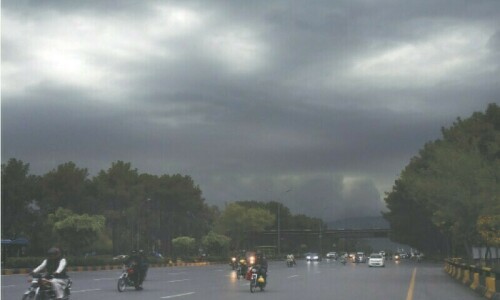At least 46 people, including 37 children, have drowned while celebrating a Hindu festival in eastern India, a local government official told AFP on Thursday.
The victims drowned in separate incidents in Bihar state while ritually bathing in rivers and ponds swollen by recent flooding, an official from the Bihar Disaster Management Department told AFP.
“People ignored dangerous water levels in rivers as well as ponds while bathing to celebrate this festival,” said the official, who requested anonymity because he was not authorised to speak to the media.
The drownings occurred from Tuesday across 15 districts of Bihar state as devotees marked the Jitiya Parv Hindu festival, observed by mothers for the wellbeing of their children.
Authorities were still working to recover three other bodies, the official said. Jitiya Parv runs over several days and is also observed in neighbouring Uttar Pradesh and Jharkhand states, and in parts of Nepal’s southern plains.
The Bihar state government has announced compensation for each of the victims’ families, the government official said.
Last year local media reported 22 people drowned during a 24-hour period in Bihar, most while marking the same festival.
Deadly incidents are common at places of worship during major religious festivals in India, the biggest of which prompt millions of devotees to make pilgrimages to holy sites.
At least 116 people were crushed to death in July at an overcrowded Hindu religious gathering in Uttar Pradesh state, the worst such tragedy in more than a decade.
India is hit by torrential rains and flash floods each year during the June-September monsoon season.
The monsoon is vital for agriculture, and therefore for the livelihoods of millions of farmers.
But it is also responsible for widespread destruction each year in the form of landslides and floods that kill hundreds of people across South Asia.
More than 200 people were killed in the southern Indian state of Kerala in July when torrential monsoon downpours caused landslides that buried tea plantations under tonnes of rock and soil.
Experts say climate change is increasing the number of extreme weather events around the world, with damming, deforestation and development projects in India exacerbating the human toll.
A 2021 study by the Potsdam Institute for Climate Impact Research tracking monsoon shifts from the mid-20th century suggested that it was becoming stronger and more erratic.
At least 4 dead as heavy rains paralyse Mumbai
Meanwhile, torrential rain lashed India’s financial capital Mumbai, triggering floods and killing at least four people as well as paralysing the city and forcing schools to close on Thursday.
Some parts of Mumbai recorded around 275 mm (11 inches) of rain on Wednesday evening, which crippled road traffic and delayed the trains millions of city residents use every day.
Four people died from rain-related incidents, officials said.
With more rain expected, authorities issued a citywide red alert, and urged residents to stay home. Schools and colleges were shut and fishermen were asked to stay away onshore until Friday.
Drone footage posted on social media showed snarled highways clogged with cars — some with their drivers still inside, others abandoned by frustrated drivers.
Hundreds of thousands of commuters spent hours on the road.
India’s monsoon rains started retreating from the northwest of the country earlier this week, nearly a week later than normal, the state-run India Meteorological Department (IMD) said in a statement.
The monsoon generally begins in June and starts to retreat by September 17 but the rains continued this year, which has helped to replenish reservoirs but damaged the crop harvest in some states.
Heavy rain was also forecast for some parts of the southern state of Telengana on Thursday, the weather office said.
Indian officials reported earlier this month that more than 60 people died across three states due to severe flooding caused by heavy rains over the past several days.
Rivers had burst their banks and more than 30,000 people fled their homes.
The state government had said that 13 people had died from drowning and the rest from houses or trees collapsing on them.
In August, emergency workers rescued nearly 1,000 people who were stranded in different parts of the Himalayas following torrential rainfall in northern India, which caused widespread damage and left at least 12 people dead.
















































Dear visitor, the comments section is undergoing an overhaul and will return soon.